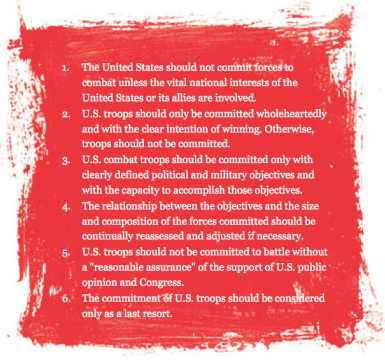|
The Persian Gulf press policy was guided by two principles: the military's needs over the media's "right-to-know" and maintaining government credibility.
"There was ample precedent that one of the really great ways to screw up an operation certainly was the lesson learned in Southeast Asia is don't get out there making claims you can't back up." -Dick Cheney, U.S. Secretary of Defense |
Preventing another "nam"
There was little controversy over the U.S. entering the Persian Gulf War. Fighting to protect an ally, Saudi Arabia; restricting Saddam Hussein, a dictator infamous for human right's violations; and protecting oil, was all in the national interest. The problem was fighting the ghost of Vietnam–the legacy of defeat, countless casualties, and loss of public support that had partially dictated U.S. military policy back in Vietnam.
Thus the Persian Gulf War, unlike that of Vietnam, had to be fought with full support.
Thus the Persian Gulf War, unlike that of Vietnam, had to be fought with full support.
The government had to grapple with post-Vietnam War era journalists and a media-savvy public.







